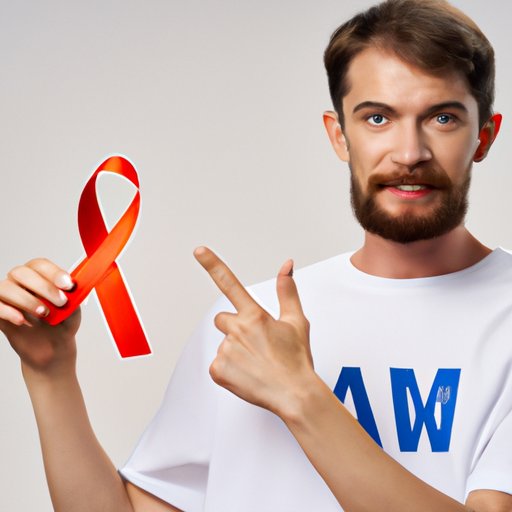
I. Introduction
The human immunodeficiency virus (HIV) and acquired immunodeficiency syndrome (AIDS) have been a global health issue for decades. According to the World Health Organization, approximately 38 million people worldwide were living with HIV/AIDS in 2019. HIV/AIDS affects people of all ages and backgrounds, and it has had a devastating impact on individuals and communities. The purpose of this article is to educate and inform readers about the history, science, and myths surrounding AIDS and to help break down the stigma associated with the disease.
II. The History and Science Behind AIDS: Is it Really a Disease?
AIDS was first identified in the early 1980s in the United States and quickly spread around the world. HIV is a virus that attacks the immune system, specifically CD4 cells that help fight off infections. Without treatment, HIV can progress to AIDS, which is the final stage of HIV infection. AIDS is a medical condition that compromises the immune system, and it leaves people susceptible to life-threatening infections and cancers.
III. Debunking AIDS Myths: Understanding the Truth About the Disease
There are many misconceptions about AIDS, and it’s important to understand the truth. One common myth is that only certain groups of people can get HIV/AIDS. The truth is that anyone can get HIV/AIDS, regardless of their sexual orientation, race, or gender. Another myth is that HIV can be transmitted through casual contact, such as hugging or kissing. The truth is that HIV is spread through blood, semen, vaginal fluids, and breast milk. HIV can be prevented by practicing safe sex, using clean needles, and getting tested regularly.
IV. AIDS: A Lifelong Battle Against a Deadly Disease
Living with AIDS can be a lifelong battle that takes a physical and emotional toll on individuals and their loved ones. Symptoms of AIDS can include weight loss, fever, diarrhea, and fatigue. In addition to the physical symptoms, people living with AIDS may also experience social stigma and discrimination. Support systems are critical for people living with AIDS, and access to medical care is also essential to managing the disease.
V. Understanding the Stigma Surrounding AIDS and Why it Must End
Stigma and discrimination associated with AIDS can prevent people from accessing medical care and support. It can also lead to social isolation and negatively impact mental health. It’s crucial to combat the stigma by educating the public and raising awareness about the truth of HIV/AIDS. Treatment for HIV/AIDS is available, and people living with HIV/AIDS can lead fulfilling lives if given the proper support and care.
VI. The Importance of Early Diagnosis and Treatment for AIDS Patients
Early detection and treatment of HIV/AIDS can significantly improve patient outcomes and quality of life. HIV testing is easy and confidential, and it can help individuals know their status and take steps to prevent transmission. Treatment for HIV/AIDS involves antiretroviral therapy, which can help control the virus and prevent progression to AIDS. Adherence to treatment is critical for managing the disease and reducing the risk of transmission to others.
VII. HIV/AIDS: How it Affects the Immune System and Why it Is a Disease
HIV attacks the immune system by infecting and killing CD4 cells. Over time, the virus can significantly weaken the immune system, leading to the development of AIDS. AIDS is a disease because it affects the body’s ability to fight off infections and diseases, and it can be life-threatening if left untreated.
VIII. AIDS Prevention: How Education and Awareness Can Help Stop the Spread of the Disease
Prevention is critical for stopping the spread of HIV/AIDS. Education and awareness campaigns can help people understand how HIV is transmitted and how to prevent transmission. Safe sex practices, such as using condoms and limiting sexual partners, can help prevent transmission. Regular testing is also essential for prevention and early detection.
IX. Conclusion
AIDS continues to be a significant global health issue that affects people around the world. Understanding the truth about HIV/AIDS, breaking down myths and stigma, and supporting those living with the disease are critical to managing and ending HIV/AIDS. Resources for more information and support are available through organizations such as the World Health Organization, UNAIDS, and the Centers for Disease Control and Prevention.




